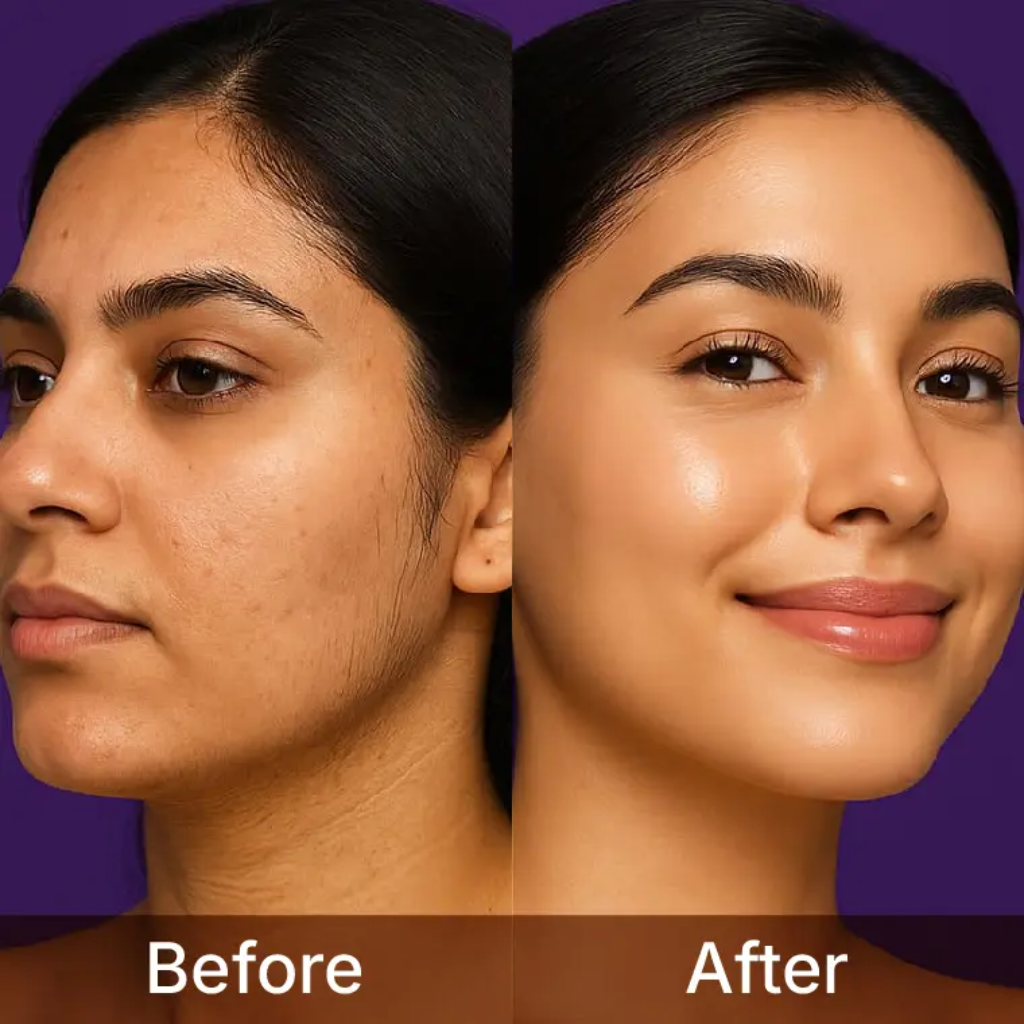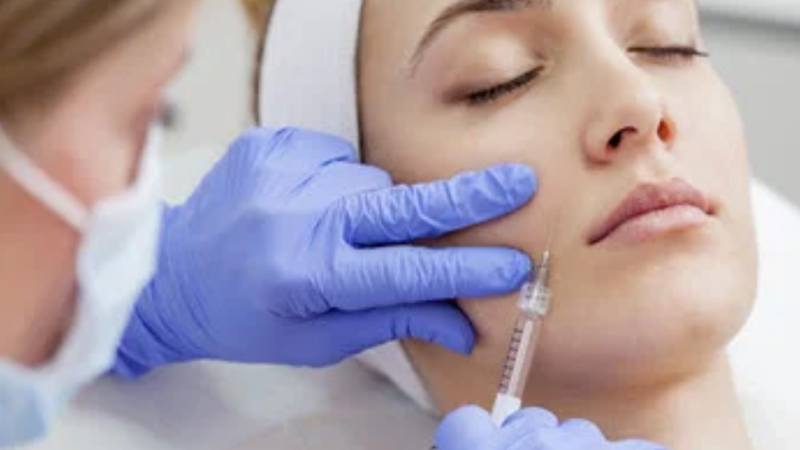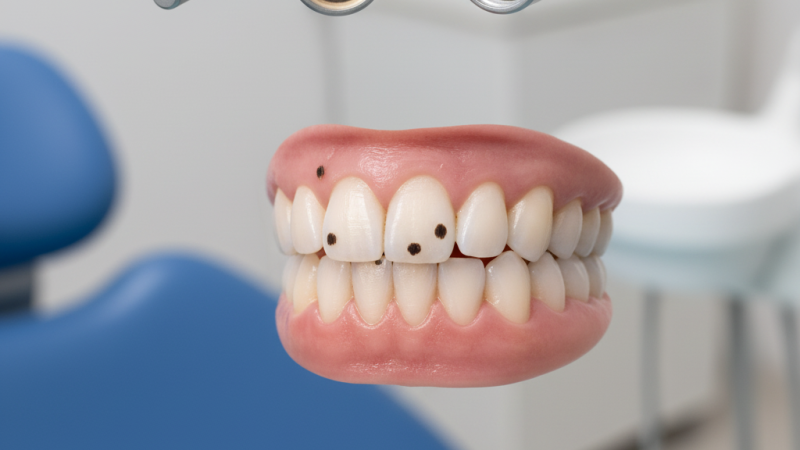Laser Hair Removal Before and After: Complete Transformation Guide

The journey toward achieving permanently smooth, hair-free skin has revolutionized personal grooming routines for millions worldwide. Laser hair removal before and after transformations showcase remarkable results that have made this cosmetic procedure one of the most sought-after aesthetic treatments available today. Understanding what happens during this transformative process helps individuals make informed decisions about pursuing this life-changing solution to unwanted body hair.
Understanding the Technology Behind Hair-Free Transformations
Laser hair removal operates through an advanced scientific process that targets unwanted hair at its source. The technology employs highly concentrated light beams that penetrate the skin’s surface and convert into heat energy upon contact with hair follicles. This thermal energy disrupts the follicle’s ability to produce new hair growth, creating long-lasting results that traditional hair removal methods simply cannot match.
The precision of modern laser systems allows practitioners to selectively target dark, coarse hairs while leaving surrounding skin tissue completely unharmed. This specificity makes the treatment both safe and effective across various body areas. The laser energy is absorbed by melanin, the pigment responsible for hair color, which explains why the treatment works exceptionally well on darker hair types. Each pulse of the laser can treat multiple hair follicles simultaneously, making sessions relatively quick despite treating large surface areas.
Different laser technologies cater to varying skin tones and hair types. Alexandrite lasers excel at treating lighter skin tones with dark hair, while Nd:YAG lasers safely and effectively address darker skin types without causing hyperpigmentation or other complications. This technological versatility ensures that laser hair removal before and after results remain consistently impressive across diverse patient populations.
The Reality Before Starting Your Hair Removal Journey
Before embarking on laser hair removal, most individuals find themselves trapped in exhausting cycles of temporary hair removal solutions. Daily shaving creates a constant battle against stubble, often resulting in razor burn, nicks, cuts, and the dreaded irritation that accompanies frequent blade use. The repetitive nature of shaving transforms morning routines into time-consuming chores that must be repeated endlessly to maintain smooth skin.
Waxing appointments present their own set of challenges, requiring regular salon visits that disrupt busy schedules and drain bank accounts. The pain associated with waxing ranges from uncomfortable to excruciating, particularly in sensitive areas like the bikini line or facial regions. Between waxing sessions, individuals must wait for hair to grow sufficiently long for effective removal, meaning they endure periods of visible unwanted hair that affects their confidence and clothing choices.
Depilatory creams offer chemical solutions but frequently cause skin reactions, emit unpleasant odors, and provide results lasting only slightly longer than shaving. Plucking and threading work for small areas but prove impractical for larger body regions and cause considerable discomfort. These conventional methods share common drawbacks including ingrown hairs, skin irritation, uneven results, and the frustrating reality that hair always returns within days or weeks.
The emotional toll of constant hair maintenance extends beyond mere inconvenience. Many individuals experience anxiety about visible body hair, limiting their wardrobe choices and avoiding activities like swimming or intimate situations. This psychological burden affects self-esteem and quality of life in ways that extend far beyond physical appearance. Understanding these pre-treatment struggles illuminates why laser hair removal before and after comparisons reveal such profound lifestyle improvements.
Preparing Your Skin for Optimal Treatment Results
Proper preparation significantly influences the effectiveness of laser hair removal treatments. Avoiding sun exposure for several weeks before scheduled sessions remains absolutely critical, as tanned skin increases complication risks and reduces treatment efficacy. Sunburned, recently tanned, or UV-damaged skin cannot safely undergo laser treatment, necessitating postponement until skin returns to its natural tone. Applying broad-spectrum sunscreen with SPF 30 or higher becomes mandatory during the pre-treatment period.
Self-tanning products, spray tans, and tanning beds must be completely avoided, as artificial pigmentation interferes with the laser’s ability to distinguish between hair follicles and surrounding skin. The laser targets melanin, and artificially darkened skin confuses this targeting mechanism, potentially causing burns or ineffective treatment. Patients should discontinue self-tanners at least two weeks before their first appointment.
Shaving the treatment area one to two days before each session allows the laser to target hair follicles beneath the skin’s surface while minimizing discomfort. Unlike waxing or plucking, shaving preserves the hair root structure that the laser needs to destroy. Waxing, threading, or plucking must be avoided for at least four weeks prior to treatment, as these methods remove the entire hair follicle, leaving nothing for the laser to target.
On treatment day, skin must remain completely clean and free from lotions, moisturizers, makeup, deodorant, perfumes, and any other topical products. These substances create barriers that interfere with laser penetration and increase adverse reaction risks. Wearing loose, comfortable clothing prevents irritation to treated areas immediately following sessions. Avoiding strenuous exercise and activities that elevate body temperature for several hours before appointments helps maintain optimal skin conditions for treatment.
What Happens During Your Treatment Sessions
Walking into a laser hair removal appointment, patients can expect a systematic, professional experience designed to maximize comfort and results. The practitioner begins by thoroughly cleansing the treatment area to remove any residual products or oils. Protective eyewear shields eyes from the intense laser light, ensuring safety throughout the procedure. Some clinics apply cooling gels or use integrated cooling systems that minimize discomfort during laser pulses.
The actual treatment involves the practitioner systematically passing the laser handpiece across the designated area. Each pulse feels like a quick snap against the skin, often described as a rubber band flicking sensation. Discomfort levels vary depending on individual pain tolerance and treatment location, with more sensitive areas like the bikini line or upper lip producing stronger sensations than legs or arms. Modern laser systems incorporate cooling mechanisms that significantly reduce discomfort compared to older technologies.
Session duration depends entirely on the treatment area size. Small zones like the upper lip require only minutes, while larger areas such as full legs may take over an hour. Most patients tolerate the procedure well without numbing cream, though topical anesthetics remain available for those with heightened sensitivity or treating particularly delicate regions.
Immediately following treatment, the targeted area may appear slightly red or feel similar to mild sunburn. This normal reaction typically subsides within hours. The practitioner applies soothing gel and provides detailed aftercare instructions to optimize healing and results. Patients leave appointments able to resume most normal activities immediately, though specific precautions regarding sun exposure and skincare remain essential.
The Gradual Transformation Through Multiple Sessions
Understanding that laser hair removal before and after results develop gradually over multiple sessions helps set realistic expectations. Hair grows in cycles, and the laser only effectively treats follicles in their active growth phase called anagen. Since only approximately 20-30 percent of hair follicles exist in this phase at any given time, multiple treatments spaced several weeks apart become necessary to target all follicles as they enter active growth periods.
After the first session, patients notice hair in treated areas begins shedding over the following seven to fourteen days. This shedding process represents successfully treated follicles expelling damaged hair. Gentle exfoliation after initial redness subsides can facilitate this natural shedding and prevent ingrown hairs. However, not all hair disappears after the initial treatment, as dormant follicles remain unaffected until subsequent sessions.
Between the second and fourth treatments, hair regrowth becomes noticeably slower and finer. The hairs that do return appear lighter in color and softer in texture compared to original growth. Many patients report significant reductions in overall hair density, with treated areas remaining smoother for progressively longer periods between sessions. This cumulative effect builds with each successive appointment.
By the fifth through eighth sessions, most individuals experience dramatic reductions in unwanted hair, with some areas becoming nearly completely hairless. The few remaining hairs typically grow so fine and light that they become barely noticeable. Complete treatment courses generally require six to eight sessions spaced four to six weeks apart for body areas, though facial hair may necessitate additional sessions due to its hormonal sensitivity and different growth patterns.
Experiencing Your Remarkable After-Treatment Results
The transformative impact of completing a full laser hair removal course extends far beyond physical appearance. Smooth, consistently hair-free skin becomes the new normal rather than a temporary achievement requiring constant maintenance. Running hands over legs or underarms reveals silky texture without any trace of stubble or regrowth. This tactile difference proves profoundly satisfying for individuals who spent years battling unwanted hair.
Time savings represent one of the most appreciated benefits in laser hair removal before and after comparisons. Morning routines shrink significantly without daily shaving requirements, freeing up precious minutes that accumulate into hours over weeks and months. Eliminating regular waxing appointments removes scheduling hassles and associated costs. The convenience factor alone justifies the initial investment for many satisfied patients.
Confidence improvements manifest in numerous ways throughout daily life. Individuals report feeling comfortable wearing sleeveless tops, shorts, swimwear, and form-fitting clothing without anxiety about visible hair. Spontaneous beach trips, pool parties, and intimate situations no longer trigger panic about grooming preparation. This newfound freedom translates into enhanced self-esteem and reduced social anxiety.
The long-term financial benefits become apparent when comparing laser hair removal costs against lifetime expenses of razors, shaving cream, waxing appointments, and other temporary solutions. While upfront costs seem substantial, the permanent reduction in hair growth eliminates these recurring expenses indefinitely. Most patients find their investment pays for itself within several years while providing ongoing benefits for decades.
Common Treatment Areas and Their Transformations
Facial hair removal ranks among the most requested treatments, particularly for women experiencing unwanted growth on the upper lip, chin, or sideburns. Laser hair removal before and after photos of facial areas demonstrate dramatic improvements that boost confidence tremendously. The delicate nature of facial skin requires skilled practitioners using appropriate laser settings to achieve smooth results without causing pigmentation changes or scarring.
Underarm treatments deliver exceptional results that eliminate dark stubble shadows and reduce body odor by minimizing bacterial growth in hair follicles. The convenience of never needing deodorant-stained clothing or worrying about raised arms revealing visible hair provides immense relief. Underarms typically respond excellently to treatment, with most patients achieving near-complete hair removal within the standard course.
Bikini line and Brazilian treatments address one of the most uncomfortable grooming challenges. Removing hair from these sensitive areas through traditional methods often causes severe irritation, ingrown hairs, and pain. Laser treatment eliminates these problems while providing precisely shaped results that remain consistent long-term. Privacy concerns are addressed through professional draping techniques and experienced practitioners who prioritize patient comfort.
Leg treatments, while requiring longer session times due to surface area, produce remarkable smoothness that lasts indefinitely after completing treatment courses. Full leg treatments eliminate the tedious routine of frequent shaving and allow carefree wearing of skirts, dresses, and shorts. Many patients describe legs feeling softer and looking more even-toned after laser hair removal compared to their pre-treatment appearance.
Back and chest treatments prove especially popular among men seeking to reduce excessive body hair. These large areas benefit from laser technology’s ability to efficiently treat extensive regions while maintaining precision. Results create cleaner, more groomed appearances without the maintenance burden of constant shaving or painful waxing sessions.
Managing Expectations and Understanding Individual Variations
While laser hair removal before and after results consistently impress, understanding that individual outcomes vary prevents disappointment. Factors including hair color, skin tone, hormonal status, and genetic predisposition all influence treatment effectiveness. Individuals with dark, coarse hair on lighter skin typically achieve the most dramatic results most quickly, as the contrast enables optimal laser targeting.
Blonde, red, gray, or white hair contains insufficient melanin for effective laser treatment with standard technologies. Alternative methods or newer laser systems specifically designed for light hair may provide some benefit, though results remain less predictable. Discussing realistic expectations during initial consultations helps identify suitable candidates and prevents pursuing treatments unlikely to produce satisfactory outcomes.
Hormonal conditions like polycystic ovary syndrome (PCOS) can complicate results by stimulating new hair growth even after successful follicle destruction. Patients with hormonal imbalances may require maintenance sessions more frequently than those without such conditions. Coordinating laser treatments with appropriate medical management of underlying hormonal issues optimizes long-term results.
Some individuals experience complete permanent hair removal while others achieve substantial reduction requiring occasional touch-up sessions. Most patients fall somewhere between these extremes, enjoying maintenance-free smoothness for months or years before needing infrequent additional treatments. These maintenance sessions remain far less burdensome than pre-treatment grooming routines.
Caring for Your Skin Following Treatment Sessions
Proper aftercare significantly influences both immediate comfort and ultimate results. Treated areas require gentle handling and specific precautions to promote optimal healing and prevent complications. The most critical aftercare instruction involves strict sun avoidance for at least two weeks following each session. UV exposure on treated skin dramatically increases risks of hyperpigmentation, burns, and other adverse reactions that can permanently damage skin appearance.
Daily application of broad-spectrum sunscreen with SPF 30 or higher becomes non-negotiable when sun exposure cannot be completely avoided. Zinc oxide or titanium dioxide-based mineral sunscreens provide safest protection for post-treatment skin. Covering treated areas with clothing offers additional protection during unavoidable outdoor activities. Planning treatments during seasons with less sun exposure can simplify aftercare compliance.
Avoiding hot baths, saunas, steam rooms, and vigorous exercise for 24-48 hours after treatment prevents excessive heat that can exacerbate skin irritation. Lukewarm showers with gentle, fragrance-free cleansers maintain hygiene without aggravating treated areas. Pat skin dry rather than rubbing to minimize friction and irritation.
Moisturizing with fragrance-free, gentle lotions helps maintain skin hydration and comfort during the healing process. Specialized post-laser gels containing ingredients like aloe vera or colloidal silver can accelerate healing and soothe any lingering redness or sensitivity. Avoiding harsh skincare products including retinoids, alpha hydroxy acids, and vitamin C serums for several days post-treatment prevents unnecessary irritation.
Resisting the urge to pick at or scratch treated skin remains essential, even if experiencing temporary itching or developing small bumps. These reactions typically resolve naturally within 24-48 hours. Applying cool compresses provides relief without risking skin damage. Never use ice directly on treated skin, as extreme cold can cause additional complications.
Addressing Potential Side Effects and Complications
Most individuals tolerate laser hair removal extremely well, experiencing only minor, temporary side effects. The most common reaction involves redness and slight swelling around hair follicles, creating an appearance similar to mild sunburn or tiny hives. This histamine response represents normal inflammatory reactions to follicle damage and typically subsides within hours to two days. Cool compresses and gentle moisturizers alleviate discomfort during this brief period.
Some patients experience temporary hyperpigmentation or hypopigmentation, particularly those with darker skin tones or those who failed to avoid sun exposure before treatment. These pigmentation changes usually resolve naturally over several weeks to months as skin regenerates. Adhering strictly to sun protection protocols minimizes these risks substantially.
Itching occasionally occurs as treated hair follicles begin shedding damaged hair. This sensation can feel intense but should not be scratched, as breaking the skin surface invites infection and potential scarring. Antihistamines or topical anti-itch creams can provide relief if itching becomes bothersome. Keeping skin well-moisturized also reduces itching frequency and severity.
Rare complications include blistering, crusting, or scarring, typically occurring only when treatments are performed incorrectly or on inappropriate candidates. Choosing experienced, qualified practitioners using FDA-approved laser systems dramatically reduces these serious complication risks. Thoroughly researching clinics and ensuring practitioners hold proper certifications and credentials protects against substandard treatment that could cause lasting damage.
Comparing Laser Hair Removal to Alternative Methods
Traditional shaving remains the most common hair removal method but provides only temporary results lasting one to three days. The repetitive nature of shaving causes cumulative skin damage through micro-cuts, irritation, and chronic razor burn. Ingrown hairs frequently plague those who shave regularly, particularly individuals with curly hair or sensitive skin. Laser hair removal before and after comparisons highlight the dramatic convenience improvement over endless shaving cycles.
Waxing offers longer-lasting results than shaving, typically maintaining smoothness for two to four weeks. However, the pain associated with waxing deters many individuals, and the requirement to grow hair sufficiently long between appointments creates unwanted visibility periods. Waxing can cause folliculitis, ingrown hairs, and skin lifting, particularly for those using certain medications or skincare products. The recurring costs of professional waxing accumulate significantly over years, often exceeding laser hair removal expenses.
Depilatory creams dissolve hair at the skin’s surface through chemical reactions, providing results slightly longer-lasting than shaving without requiring blades. The harsh chemicals frequently cause allergic reactions, skin burns, and irritation, particularly on sensitive areas. The unpleasant odor and messy application process make these products inconvenient. Results remain temporary, requiring reapplication every few days.
Electrolysis represents the only FDA-approved permanent hair removal method besides laser treatment. While effective, electrolysis treats one hair follicle at a time using electrical current, making the process extremely time-consuming and expensive for large areas. The procedure often proves more painful than laser treatment and carries higher scarring risks. Laser technology’s ability to treat multiple follicles simultaneously makes it vastly more practical for most patients.
Maintaining Your Smooth Results Long-Term
After completing a full laser hair removal treatment course, most individuals enjoy maintenance-free smoothness for extended periods. The duration of permanent hair reduction varies based on individual factors including hormonal status, genetic predisposition, and the completeness of initial treatments. Many patients remain virtually hair-free indefinitely, while others notice minimal regrowth after several months or years.
Any hair that does eventually regrow typically appears significantly finer, lighter, and sparser than original growth. These few remaining hairs can often be managed with simple shaving or quick touch-up laser sessions. Maintenance treatments remain far less frequent and less expensive than ongoing traditional hair removal methods, usually requiring only one or two sessions annually at most.
Hormonal changes can trigger new hair growth in previously treated areas. Life events like pregnancy, menopause, or changes in hormonal contraception may stimulate dormant follicles or activate new ones. Patients experiencing these transitions might require additional treatments to address newly developed hair, though these sessions effectively eliminate new growth just as initial treatments did.
Protecting treated skin from sun damage continues providing benefits beyond preventing complications. UV exposure accelerates skin aging and can darken hair, potentially making any future regrowth more visible. Maintaining diligent sun protection habits established during treatment helps preserve both hair removal results and overall skin quality.
Financial Investment and Value Considerations
The cost of laser hair removal varies considerably based on treatment area size, geographic location, clinic reputation, and the number of sessions required. Small areas like the upper lip may cost $50-150 per session, while full leg treatments can range from $200-500 per session. Complete treatment packages typically include six to eight sessions, with many clinics offering bundled pricing that reduces per-session costs.
While the upfront investment seems substantial, comparing lifetime costs of alternative hair removal methods reveals impressive value. The average woman spends thousands of dollars on razors, shaving cream, and waxing over her lifetime. Men investing in regular back or chest waxing incur even higher recurring costs. Laser hair removal’s semi-permanent to permanent results eliminate these ongoing expenses, creating long-term savings that offset initial treatment costs.
Many clinics offer financing options that make treatments more accessible through monthly payment plans. These arrangements allow patients to begin treatments immediately rather than delaying while saving the full amount. Some health savings accounts (HSA) or flexible spending accounts (FSA) cover laser hair removal for medically necessary cases, such as treating chronic ingrown hairs or pilonidal cysts.
The intangible value of saved time, increased confidence, and enhanced quality of life proves difficult to quantify but represents significant benefits in laser hair removal before and after lifestyle comparisons. The convenience of maintenance-free smooth skin and freedom from grooming anxiety provides returns that extend far beyond financial considerations.
Choosing the Right Clinic and Practitioner
Selecting a qualified, experienced provider remains crucial for achieving optimal laser hair removal before and after results while minimizing complication risks. Researching potential clinics thoroughly includes verifying practitioners hold appropriate certifications and licenses for performing laser treatments. Medical spas staffed by licensed estheticians working under physician supervision typically provide safer, more effective treatments than non-medical facilities.
Examining before and after photos from actual patients treated at the clinic provides insight into the quality of results achieved. Legitimate clinics maintain extensive photo galleries showcasing diverse skin types, treatment areas, and progression throughout treatment courses. Be wary of facilities displaying only stock photos or limited results, as this may indicate inexperience or poor outcomes.
Reading reviews from previous patients reveals valuable information about clinic professionalism, staff knowledge, treatment comfort, and result satisfaction. Pay particular attention to reviews mentioning how clinics handle complications or unsatisfactory results, as this demonstrates their commitment to patient care and outcome quality.
Consultation appointments should include thorough skin assessments, realistic expectation discussions, and detailed explanations of the treatment process, expected timeline, and potential risks. Reputable practitioners honestly assess whether you represent a good candidate and never guarantee specific results or promise complete permanent hair removal. They should readily answer questions and address concerns without pressuring you to commit immediately.
Special Considerations for Different Skin Types
Advances in laser technology have made safe, effective hair removal possible for all skin tones, though different laser types work optimally for specific complexions. Fitzpatrick skin types I-III (light to medium skin tones) typically achieve excellent results with Alexandrite or diode lasers. These systems effectively target melanin in hair follicles while minimizing surrounding skin damage due to strong contrast between light skin and dark hair.
Darker skin types IV-VI require specialized Nd:YAG lasers specifically designed to safely treat high-melanin skin without causing burns or pigmentation changes. These longer-wavelength lasers penetrate deeper into skin while bypassing melanin in the epidermis, directly targeting hair follicles. Clinics serving diverse populations should maintain multiple laser systems to appropriately treat all skin types.
Individuals with tanned skin must delay treatments until natural skin tone returns, regardless of their baseline complexion. Tan skin lacks sufficient contrast between epidermis and hair follicle melanin, increasing burn risks and reducing treatment effectiveness. This requirement applies equally to natural tans from sun exposure and artificial tans from self-tanning products.
Patients with darker skin tones should specifically seek practitioners experienced treating their complexion type, as technique adjustments and appropriate laser settings prove crucial for safe, effective treatment. Requesting to see before and after photos of patients with similar skin tones during consultations helps verify practitioner expertise.
Debunking Common Myths and Misconceptions
Numerous myths surrounding laser hair removal persist despite extensive evidence proving their inaccuracy. One prevalent misconception claims the treatment causes cancer, which lacks any scientific foundation. Laser hair removal uses non-ionizing radiation that cannot damage DNA or cause cellular mutations leading to cancer development. The procedure has been thoroughly studied and proven safe when performed correctly.
Some individuals fear laser hair removal damages internal organs or interferes with reproductive health. The laser penetrates only millimeters into skin, affecting only hair follicles and immediately surrounding tissue. It cannot reach deeper structures, muscles, organs, or reproductive systems. Treatments remain completely safe for overall health.
The myth that laser treatment makes hair grow back thicker or darker has been definitively disproven. Successfully treated follicles either stop producing hair entirely or generate significantly finer, lighter growth. Any perception of increased thickness results from the contrast between treated and untreated areas or new growth from previously dormant follicles unaffected by early sessions.
Another common misconception suggests laser hair removal provides instant results after a single session. As explained throughout this guide, hair growth cycles necessitate multiple treatments spaced over several months to achieve comprehensive follicle destruction. Understanding this process prevents disappointment and ensures realistic expectations about the timeline for achieving final results.
Real Patient Experiences and Testimonials
Individuals who complete laser hair removal courses consistently report transformative experiences that extend beyond physical appearance changes. Many describe the treatment as life-changing, liberating them from decades of frustrating, time-consuming grooming routines. The emotional relief accompanying smooth, maintenance-free skin proves as significant as the physical transformation itself.
Patients frequently express surprise at how quickly they adjust to their new normal, often forgetting they once struggled with unwanted hair. The absence of daily shaving routines or regular waxing appointments becomes so natural that many cannot imagine returning to previous habits. This psychological shift demonstrates the profound impact of laser hair removal before and after lifestyle changes.
Common themes in patient feedback include increased spontaneity in activities and clothing choices, reduced anxiety about physical appearance, enhanced intimate confidence, and appreciation for reclaimed time formerly spent on hair removal. Many individuals wish they had pursued treatment years earlier rather than enduring unnecessary grooming struggles.
Some patients report unexpected benefits including reduced body odor in treated areas due to decreased bacterial growth in eliminated hair follicles. Others note improved skin texture and reduced hyperpigmentation from chronic shaving irritation. These secondary benefits add value beyond the primary goal of hair removal.
Frequently Asked Questions About Laser Hair Removal Before and After
How many sessions does it take to see results from laser hair removal?
Most individuals notice significant hair reduction after three to four sessions, though complete results require six to eight treatments spaced four to six weeks apart. The exact number varies based on hair thickness, treatment area, and individual response to treatment.
Does laser hair removal work on all hair colors?
The treatment works best on dark hair containing sufficient melanin for laser targeting. Blonde, red, gray, and white hair respond poorly to standard laser technology due to minimal melanin content. Newer systems show promise for light hair but remain less effective than treatments for dark hair.
Is laser hair removal painful?
Most patients describe sensations as tolerable, comparing pulses to quick rubber band snaps. Discomfort levels vary by treatment area and individual pain tolerance, with sensitive zones like the bikini line causing more sensation than areas like legs or arms. Modern cooling systems significantly reduce discomfort.
How long do laser hair removal results last?
Results are considered permanent hair reduction rather than complete permanent removal. Most patients enjoy maintenance-free smoothness for years, with some experiencing indefinite hair-free skin. Any eventual regrowth typically appears finer and sparser than original hair, requiring only occasional touch-up sessions.
Can laser hair removal cause skin damage?
When performed correctly by qualified practitioners using appropriate laser settings, complications remain rare. Temporary redness, swelling, and pigmentation changes may occur but typically resolve quickly. Serious complications like burns or scarring result from improper technique or treating inappropriate candidates.
What is the difference between laser hair removal before and after care requirements?
Before treatment, patients must avoid sun exposure, discontinue waxing or plucking, and arrive with clean, product-free skin. After treatment, sun protection remains critical, along with gentle skincare, avoiding heat exposure, and moisturizing treated areas. Both phases require diligent adherence for optimal results.
Can you shave between laser hair removal sessions?
Yes, shaving remains the only acceptable hair removal method between sessions. Shaving preserves hair follicles beneath the skin surface for laser targeting while maintaining groomed appearance. Waxing, plucking, and threading must be avoided as they remove entire follicles needed for effective treatment.
Are there any health conditions that prevent laser hair removal?
Certain conditions including active skin infections, open wounds, or photosensitive disorders may require treatment postponement. Pregnancy remains a relative contraindication due to hormonal changes and limited safety data. Medications causing photosensitivity may necessitate adjustments or delays.
How does laser hair removal compare to electrolysis?
Both methods provide permanent results, but laser technology treats multiple follicles simultaneously while electrolysis targets one at a time. Laser treatments prove faster and more practical for large areas, though electrolysis works on all hair colors. Laser typically causes less discomfort and carries lower scarring risks.
What happens if you stop laser hair removal treatment midway?
Incomplete treatment courses result in partial hair reduction rather than comprehensive results. Treated follicles remain destroyed, but untreated follicles continue producing hair. Resuming treatment later can complete the process, though timing gaps may extend overall treatment duration.
Why does laser hair removal require multiple sessions?
Hair grows in cycles with only 20-30 percent of follicles in the active growth phase targeted by lasers at any time. Multiple sessions spaced weeks apart allow treatment of different follicle groups as they enter active phases, ultimately addressing all follicles for complete reduction.
Can laser hair removal treat ingrown hairs?
Yes, eliminating hair growth prevents ingrown hair development by removing the source. Many patients seeking laser treatment specifically aim to resolve chronic ingrown hair problems caused by shaving or waxing. Results prove particularly effective for individuals prone to this painful condition.





